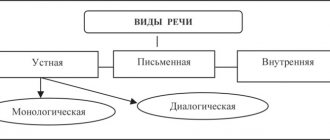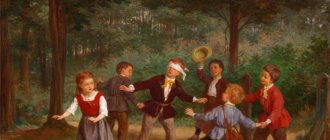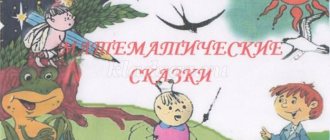Forms of work with parents on theatrical activities
Forms of work with parents on theatrical activities.
Staging a performance yourself is not only fun, but also fashionable. There is a real boom in amateur family theaters across the country. It is necessary to support and develop family theatrical creativity in order to strengthen the continuity of family traditions; increasing the role of theatrical art in the aesthetic and moral education of the younger generation; increasing the role of the family in the aesthetic and moral education of the younger generation; developing communication skills and solving psychological problems, achieving better mutual understanding in the family, stimulating family creative connections. Introducing children to fiction and theater must begin from a very early age. At home, as in kindergarten, you can use different types of theater.
In our work, we use a variety of non-traditional forms of working with parents. These include:
Information and analytical:
*questionnaire, survey, mailbox
(Conducted to identify the family’s interest in theater and desire to practice it at home)
Visual information:
*open screening of theatrical activities for parents
(Parents see the results of joint activities);
* release of an interactive wall newspaper
(Information about the theatrical life of the group, the successes of children, competitions, recommendations for the development of children with photographs, products of individual and collective children's creativity is posted);
* exhibitions of different types of theaters;
* photo exhibitions (“Theater News”);
* mini libraries
(Give parents the necessary literature to study or recommend this or that publication);
* information folders;
* non-traditional open days.
Cognitive:
* workshops
(Problem situations are resolved together with parents, elements of training are present);
* non-traditional parent-teacher conferences
(One of the most effective educational forms of working with families, where parents share their experiences);
* joint work on the project;
* excursions;
*master classes
(Adults and children demonstrate their achievements in the theatrical field and teach others);
Leisure:
* joint holidays, leisure, entertainment;
* weekend theater, family theater (a constructive form of interaction between educators and parents);
* theater week;
*music lounge;
*participation of parents in competitions and exhibitions.
Labor or economic:
*production of dolls, scenery, costumes
(By participating in the making of costumes, decorating the hall, preparing for theatrical performances, etc., close relationships are established between parents and teachers, which is a good example for children.)
Consultations for teachers on theatrical activities consultation (junior group) on the topic
Consultation for educators.
Development of figurative speech
Figurative speech is an integral part of speech culture in the broad sense of the word. Speech culture means compliance with the norms of the literary language, the ability to convey one’s thoughts, feelings, and ideas in accordance with the purpose and purpose of the statement in a meaningful, grammatically correct, accurate and expressive manner. Speech becomes figurative, direct and lively if the child develops an interest in linguistic richness and develops the ability to use a wide variety of expressive means in speech.
A high level of speech culture includes such characteristics as richness, accuracy and expressiveness. The richness of speech presupposes a large volume of vocabulary, understanding and appropriate use of words and phrases in speech, and a variety of linguistic means used. Precision of speech can be considered as optimal word usage: this is the choice of words that best convey the content of the statement, reveal its topic and main idea in a logical sequence.
The development of figurative speech must be considered in several directions:
- as work on children’s mastery of all aspects of speech (phonetic, lexical, grammatical),
- Perception of various genres of literary and folklore works;
- Formation of linguistic design of an independent coherent utterance.
♦♦♦ Acquaintance with works of fiction and oral folk art, including small literary forms (proverbs, sayings, epithets, metaphors, phraseological units, riddles, tongue twisters).
All these areas are the most important sources for the development of expressiveness of figurative children's speech.
The development of figurative speech should take place in unity with the development of other qualities of a coherent statement, based on ideas about the compositional features of a fairy tale, short story, fable, poem, on a sufficient supply of figurative vocabulary and an understanding of the appropriateness of its use in one’s own writings.
An indicator of the richness of speech is not only a sufficient amount of active vocabulary, but also the variety of phrases used, syntactic structures, as well as the sound (expressive) design of a coherent utterance. In this regard, the connection between each speech task and the development of speech imagery can be traced.
The phonetic side of the development of speech imagery largely depends on the intonation of the statement, and hence the emotional impact on the listener. The coherence (smoothness) of the presentation of the text is also influenced by such characteristics of the sound culture of speech as the strength of the voice (loudness and correct pronunciation), clear diction, tempo of speech
The development of figurative speech is an important component of the education of a culture of speech in the broad sense of the word, which is understood as compliance with the norms of the literary language, the ability to convey one’s thoughts, feelings, ideas in accordance with the purpose and purpose of the statement in a meaningful, grammatically correct, accurate and expressive manner.
Lexical work aimed at understanding the semantic richness of a word helps the child find the exact word in the construction of a statement, and the appropriateness of using a word can emphasize its figurativeness.
Specially organized lexical work aimed at developing in preschoolers the ability to select lexical means that most accurately correspond to the revealed concept is considered in the context of the arbitrariness of constructing a coherent statement.
A preschooler initially understands a word only in its basic, direct meaning. With age, the child begins to understand the semantic nuances of a word, becomes familiar with its polysemy, learns to understand the figurative essence of artistic speech, the figurative meaning of phraseological units, riddles, and proverbs.
DICTIONARY WORK
The main task of dictionary work is to clarify the existing vocabulary and enrich it. Children must not only remember new words, but also be able to use them freely.
Among the many vocabulary work techniques that can be
used in the classroom, the following can be highlighted:
1. Showing and naming a new object (and its signs) or actions. Show must
accompanied by an explanation that helps to understand the essence of the subject. A new word must be pronounced in chorus and individually. For better understanding and memorization, this word is included in a context familiar to the child. Next, various exercises are carried out to reinforce its correct pronunciation and use.
2. Explanation of the origin of this word (breadbox - a container in which to store
bread; coffee pot - a container in which coffee is brewed; kettle - a vessel in which tea is boiled, etc.).
3. The use of expanded meanings of already known phrases (huge
house - a very large house, one that is higher than all other houses).
4. Posing questions of different forms, which at first are prompt in nature (“Is this fence high or low?”), i.e., selection of antonyms, and then require independent answers. Questions should be short, precise, and accessible in content. It is also necessary to teach children to ask questions independently.
5. Selection of names of objects for actions and names of actions for objects; adverbs to the names of various actions; epithets to the subject; cognate words.
6. Dissemination of proposals by introducing circumstances of cause, effect, conditions, goals.
7. Making sentences based on supporting words.
We offer various tasks in order to develop children's attention to the word, its various shades and meanings, and to develop their ability to select the word that best suits a given situation. All lexical material is selected by parts of speech (verb, noun, adjective, adverb). Particular attention should be paid to working on single-root and complex words. For example: snowfall, leaf fall, starfall, haymaking, airplane, etc.
In the formation of the grammatical structure of speech in terms of imagery, a special
possession of a stock of grammatical means, the ability to feel the structural and semantic place of the word form in a sentence and in the whole utterance become important. It is here that a developed “sense of style” comes into play, the ability to use a variety of grammatical means (inversion, correlation of syntax with the topic of the utterance, appropriate use of prepositions, etc. ,)-We emphasize the role of synonymy of grammatical forms and constructions depending on their semantic shades, and their role in the construction of a coherent statement. Syntactic structure is considered the main fabric of a speech utterance. In this sense, the variety of syntactic structures makes the child’s speech expressive.
In general, the development of all aspects of speech figurativeness influences the development of independent verbal creativity, which can manifest itself in a child in different genres - fairy tales, stories, poems, nursery rhymes, riddles.
And finally, the expressiveness of speech involves the selection of linguistic means that correspond to the conditions and tasks of communication.
The formation of figurative speech should be carried out in unity with the development of other qualities of a coherent utterance, based on ideas about the compositional features of a fairy tale, short story, fable, poem, a sufficient supply of figurative vocabulary and an understanding of the appropriateness of its use in one’s own writings
In the development of figurative speech, works of fine art play a special role, since the formation of aesthetic perception of works of art influences the use of means of artistic expression in description, narration, and reasoning. We can also talk about the impact on the development of figurative speech and other types of art (music, theater), which in their own way influence children’s creative abilities in the field of words. The interconnection of different types of arts deepens children’s emotional impressions, develops their feelings and figurative speech. Each type of art reveals new content to the child, develops imagination, awakens new impressions and associations, and helps to understand the important role that artistic means play in creating a particular image. You can use a visit to a museum, looking at paintings and talking about the theme of one painting (genre, landscape, still life, portrait), talking about two paintings on the same topic, but by different artists.
First of all, the development of figurative speech occurs when children are introduced to different genres of fiction, including works of small folklore forms (proverbs, sayings, riddles) and phraseological units. After reading literary works, it is necessary to draw children’s attention not only to the content, but also to the artistic form. Various tasks for the selection of epithets, comparisons, metaphors and other means of artistic expression significantly influence the development of figurative speech. Vocabulary and grammar exercises also provide an excellent basis.
The development of verbal creativity includes all areas of work on words - lexical, grammatical, phonetic. It is necessary to encourage children's creative expression in the field of words and offer older preschoolers tasks to invent fairy tales, stories, and riddles. Systematic work aimed at developing a poetic ear will lead to children striving for independent creativity. The problem of developing verbal creativity includes all areas of work on words - lexical, grammatical, phonetic.
Speech becomes figurative, direct and lively if the child develops an interest in linguistic wealth and develops the ability to use a wide variety of expressive means in his speech.
It is important to emphasize that a broad understanding of imagery refers to the culture of speech. By the way a child constructs his statement, how interesting, vividly, figuratively he can tell and compose, one can judge the level of his speech development, his mastery of the richness of his native language and, at the same time, the level of his mental, aesthetic and emotional development.



